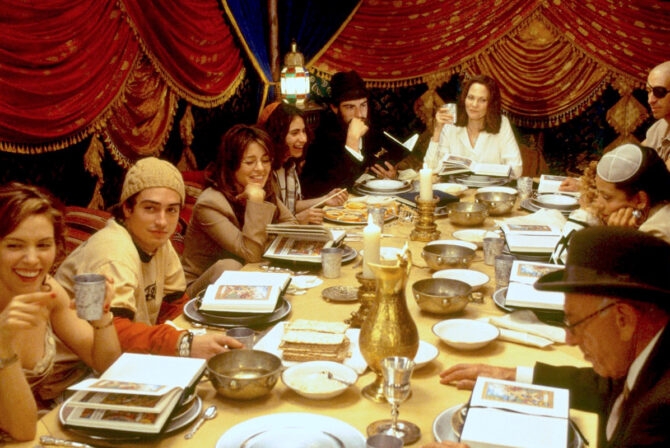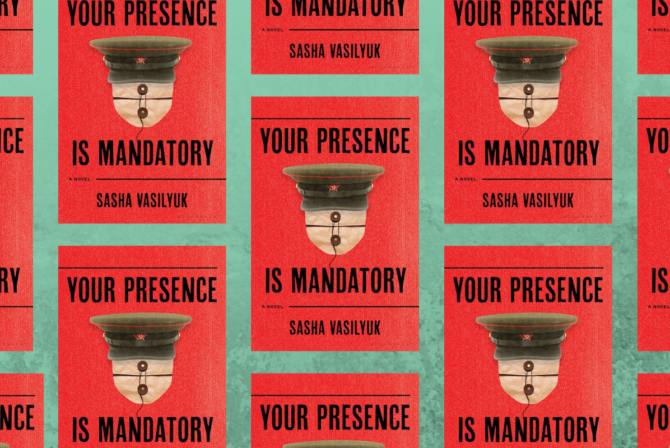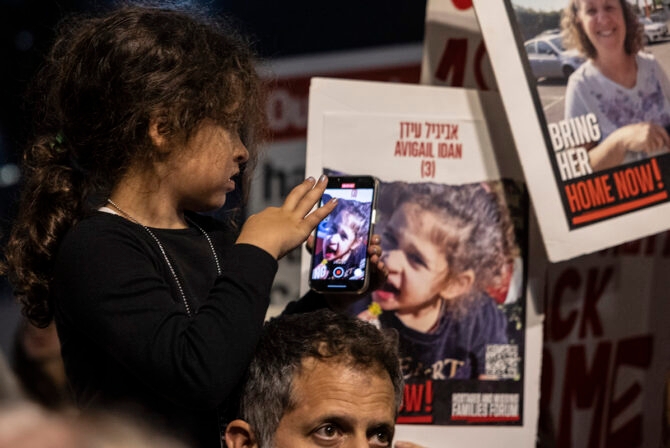I’ll never forget the first roll call in fourth grade at the St. Fabian School.
“Levey, Hilary? [Pause] Really?!”
Yes, really. My father, who gifted me his last name, is clearly a Member of the Tribe (Levite, natch). But my parents decided to baptize and raise me as a Roman Catholic, like my mother.
I was a child interested in rituals and I loved weekly school mass when the priest wouldn’t just speak at us during his homily, but ask us questions. My hand was frequently up and I cherished the days when I was called on to answer a question. So it was no surprise that later, in my fourth grade year when the teacher asked who would like to help the priest by being an “altar boy,” my hand shot up.
“But, you’re a girl, you can’t do that,” said the same teacher who had already made me feel like I didn’t belong.
As I looked at the boys sitting around me–roughhousing, picking their noses, cheating off of my schoolwork–I wondered precisely how they were better suited to the task by virtue of having a Y chromosome (girls were welcomed as altar servers a few years later, in the early 90’s, but too late for me). I couldn’t figure out how or why an institution, let alone a religious one, could decide to exclude whole categories of people without knowing anything about them as individuals.
By middle school, emboldened by a nascent feminist identity and disillusioned by a distant religious hierarchy, I refused to be confirmed in the Catholic church. Nonetheless, I continued attending parochial schools through high school.
Even though I knew I wouldn’t chose to live an adult life as a Catholic, I appreciated the opportunity to learn more about all religions. Each semester at the all-girls’ Marian High School in suburban Detroit, we had one required religion class–but these classes included “World Religions,” “Social Justice,” and “Hebrew Scriptures” (Marian was progressive in the 90’s, no longer referring to the “New” or “Old” Testaments). While I didn’t always agree with their beliefs, I formed lasting relationships with many who have a deep Catholic faith, including nuns.
So imagine my shock, and even shame, when news broke last month that my high school had fired a teacher for her “non-traditional” pregnancy. I never had Barb Webb as a teacher, but she taught Chemistry (including AP, with her students earning a “4” average on the exam) and coached various sports at Marian over nine years. Five years ago she married her wife and this year they decided to start a family. I felt so strongly that her dismissal was wrong that I got involved with the protest–now thousands strong–by writing, speaking out, and organizing.
On one hand, the groundswell of support among Marian alumnae has made me proud that so many of us feel compelled to speak out against injustice. On the other hand, this experience has significantly reinforced the decision my husband and I made three years ago to raise our children Jewish.
My husband, also a product of an interfaith marriage (though he became bar mitzvah), and I tend to be secular. But like so many young couples, when we started a family, we got serious about the issues of religion, community, and values. As social scientists, Judaism’s focus on scholarship and social action was especially attractive. More specifically, the fact that Reform Judaism (according to Rabbi Alexander Schindler, one of the most influential figures in Reform Judaism, who promoted inclusion)“by its very nature has accorded a good deal of authority to the individual,” appealed to us.
We spoke with many rabbis in the greater Boston area where we live, and we went synagogue shopping. When we attended Friday night services at the temple that we ultimately joined, Temple Beth Elohim, we watched as a young bat mitzvah was recognized–she had two moms, and she had clearly been adopted from Asia. Seeing diversity and acceptance like this–as opposed to just hearing about it–helped solidify our decision and we were comforted to know that we would be among thoughtful, just, and inclusive people.
The Union of American Hebrew Congregations (now the Union for Reform Judaism) was ahead of its time in supporting the rights of gay and lesbian couples, with leaders speaking out in the late 80’s on issues of adoption, the filing of joint income tax returns, and sharing medical benefits. And it’s not just the estimated 10% of LGBT families that Reform Judaism seeks to include. On the Union for Reform Judaism’s website they have an entire section devoted to “Diversity,” explaining that, “The face of Judaism in North America isn’t changing; it has changed.” They go on to include statistics on the number of single Jews (43%), interfaith marriages (between 1996-2001: 47%), and non-white Jews and adopted children (10% and 15-20%).
Contrast this with the attitude faced by many in the Catholic faith I grew up in. In addition to hearing stories of exclusion like those of Barb Webb, herself a Catholic, I have since read personal testimonies of friends and classmates who have been shut out of their childhood religion because of divorce, interfaith marriage, contraception (namely the use of IVF and other fertility treatments not sanctioned by the Church), and more. These attitudes and stances have led to what the National Catholic Reporter has labeled, “the wholesale exodus of young Catholics over recent years.”
In choosing Reform Judaism for my sons, I feel confident that their childhood religion will help mold them into young men who embrace inclusion and outreach. At both of their brises we highlighted the importance of not only Torah and learning, but also ma’asim tovim (good deeds) and a righteous life. Their childhood religion, which recognizes a changed world, will allow them to freely love whomever they choose–though I must admit that in fourth grade I hope they won’t be the roughhousing boys I once knew who pick their noses!
Like this post? Get the best of Kveller delivered straight to your inbox.







